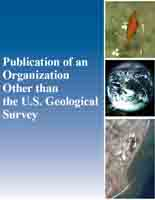Estimating carcass fat and protein in northern pintails during the nonbreeding season
Links
- More information: Publisher Index Page (via DOI)
- Download citation as: RIS | Dublin Core
Abstract
I used northern pintails (Anas acuta) collected from August through March 1979-82 in the Sacramento Valley, California to derive equations to predict ether-extracted carcass fat, carcass protein, and skeletal lean dry weight. Ether-extracted carcass fat was best predicted by total fat depot weight (wet skin, abdominal fat, and intestinal fat) (r2 = 0.94) and estimates based on carcass water content (r2 = 0.93-0.98). Measured carcass protein was best predicted by a multiple regression including total protein depot weight (breast muscles, leg muscles, and gizzard) and tarsus length (R2 = 0.79). I predicted skeletal lean dry weight by a multiple regression incorporating culmen, tarsus, and wing length (R2 = 0.77). Predicted carcass fat agreed well with measured carcass fat in an independent data set of 30 pintails using total fat depot (r2 = 0.92-0.96) and carcass water (r2 = 0.97-0.99), but predicted carcass protein agreed less well with measured protein.
Study Area
| Publication type | Article |
|---|---|
| Publication Subtype | Journal Article |
| Title | Estimating carcass fat and protein in northern pintails during the nonbreeding season |
| Series title | Journal of Wildlife Management |
| DOI | 10.2307/3801318 |
| Volume | 53 |
| Issue | 1 |
| Year Published | 1989 |
| Language | English |
| Publisher | Wiley |
| Contributing office(s) | Northern Prairie Wildlife Research Center |
| Description | 7 p. |
| First page | 123 |
| Last page | 129 |
| Country | United States |
| State | California |
| Other Geospatial | Sacramento Valley |


